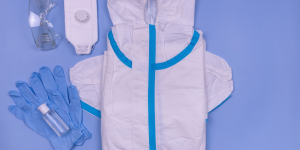Introduction:
In various industrial, commercial, and household settings, certain substances are essential for specific tasks but require careful handling and storage due to their hazardous nature. Understanding the risks associated with these products is crucial for ensuring the safety of individuals and the environment. In this blog, we’ll explore five hazardous products – Caustic Soda, Sodium Metasilicate, Sodium Percarbonate, Camphor Powder, and Isopropyl Alcohol (IPA) – along with their respective hazard classifications.
Caustic Soda (Sodium Hydroxide) – Class 8 PG II:
Caustic soda, also known as sodium hydroxide, is a highly corrosive substance used in various industries for cleaning, manufacturing, and chemical processes.
Hazards: Caustic soda can cause severe burns upon contact with the skin, eyes, or respiratory system. It is also harmful if ingested or inhaled.
Safety Measures: Wear appropriate personal protective equipment (PPE) when handling caustic soda, including gloves, goggles, and protective clothing. Store it in a cool, dry place away from incompatible materials.
Sodium Metasilicate – Class 8 PG III:
Sodium metasilicate is a crystalline compound used in detergents, cleaning agents, and industrial applications for its alkaline properties.
Hazards: Direct contact with sodium metasilicate can cause skin and eye irritation. It may also irritate the respiratory system if inhaled.
Safety Measures: Handle sodium metasilicate with care, wearing protective gloves and goggles. Ensure adequate ventilation in the workspace to minimize exposure.
Sodium Percarbonate – Class 5.1 PG II:
Sodium percarbonate is a solid compound used as a bleaching agent and oxygen-based cleaner in household and industrial products.
Hazards: Sodium percarbonate can cause skin and eye irritation upon contact. It may release hazardous gases if exposed to heat or moisture.
Safety Measures: Use protective equipment when handling sodium percarbonate, and avoid mixing it with acidic substances. Store it in a cool, dry place away from moisture.
Camphor Powder – Class 4.1 PG III:
Camphor powder is a volatile substance derived from the camphor tree, used in medicinal, aromatic, and industrial applications.
Hazards: Inhalation or ingestion of camphor powder can lead to poisoning, causing symptoms such as nausea, vomiting, and respiratory distress.
Safety Measures: Store camphor powder in a tightly sealed container away from heat and moisture. Use it in well-ventilated areas and avoid prolonged exposure.
Isopropyl Alcohol (IPA) – Class 3 PG II:
Isopropyl alcohol, or rubbing alcohol, is a common disinfectant, solvent, and antiseptic used in healthcare, cleaning, and industrial processes.
Hazards: IPA is flammable and can cause skin and eye irritation. Ingestion or inhalation of IPA can lead to intoxication or poisoning.
Safety Measures: Use IPA in well-ventilated areas away from heat sources. Wear appropriate PPE, including gloves and goggles, when handling IPA. Store it in a cool, dry place.
Conclusion:
Awareness of the hazards associated with products like caustic soda, sodium metasilicate, sodium percarbonate, camphor powder, and IPA is essential for ensuring the safety of individuals and the environment. By adhering to proper handling, storage, and usage protocols, we can mitigate the risks and prevent accidents or incidents related to these hazardous substances.




